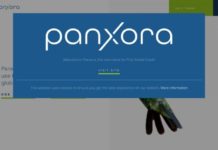[ad_1]
“The ability to melt down ERC-1155 tokens into ENJ is a major step in the adoption of Enjin as the primary crypto wallet. This feature will not only allow early adopters to swap tokens with one another but also help developers to build blockchain-based assets in a totally unique way,” said Witek Radomski, Co-Founder & CTO of Enjin.
Every token created using Enjin’s development platform, which utilizes the latest NSA-grade encryption, is imbued with an amount of Enjin Coin (ENJ) which is locked up within it. This attached ENJ guarantees the token’s base value, acts as a certificate of authenticity, and serves to curb hyperinflation of the growing digital asset market. Users will now be able to melt down and effectively destroy their ERC-1155 tokens to retrieve the attached ENJ. This is the first time ever that users will have the power to seamlessly control these robust smart contracts with an Android or iOS app.
With the wallet’s new ERC-1155 send/receive functionality, companies can produce an unlimited number of completely unique tokens, while users can freely buy, sell, trade, give, or hold them forever. Not only does Enjin decentralize the ownership of virtual assets in games, but it also means that users can log into many games using their blockchain address and see all their on-chain items appear.
The MacCoin, a limited edition coin released in August enabled customers to buy a free Big Mac to mark the 50th birthday of its most famous burger. This is an excellent example of how an ERC-1155 digital souvenir could be used by retailers and traded by collectors in the future.
Enjin’s newly launched functionality comes hot on the heels of another recent update that showcases rich data and images for ERC-721 and ERC-1155 tokens, which will serve as a blueprint for Ethereum tokens in the future.
Featuring a clean and intuitive interface, one-touch fingerprint login, and the ability to monitor and manage unlimited blockchain addresses, the wallet also implements more vigorous security measures than most banking and finance apps, utilizing NSA-grade AES-256 encryption, ARM Compiler, RAM and hardware encryption, and a keylogger-proof keyboard.
The Enjin Wallet will now also support ERC-721 collectibles for two more popular blockchain games, Blockchain Cuties and Axie Infinity, in addition to already supported assets from Gods Unchained, and CryptoKitties. To celebrate the substantial update to the Enjin Wallet, the Blockchain Cuties team is also creating a custom Enjin-themed Cutie as a salute to Enjin’s community.
- Enjin Smart Wallet Update Will Allow Users To Melt & Send ERC-1155 Tokens – October 26, 2018
- Crypto-Friendly Gallery HOFA Launches in Los Angeles With Qvantum Exhibition – October 26, 2018
- Blockchain Company WePower Announces Plans to Tokenize Estonian Power Grid – October 25, 2018
- Overstock’s Medici Ventures, Buys into Crypto Social Network, Minds – October 24, 2018
- Xfinite to release new Blockchain content platform – October 24, 2018
- Omnitude set to transform enterprise business with the move of its ECOM token to Stellar and the introduction of micropayments to users – October 24, 2018
- Nem, Proximax, And Pundi X Join Growing List Of Sportsfix Sponsor Partners – October 23, 2018
- NEM Foundation’s Founder Lon Wong Becomes SportsFix Chief Technology Advisor – October 10, 2018
- Medici Ventures Backs Wine Blockchain Project VinX – October 4, 2018
- Lithuanian Members of European Parliament Say Blockchain is Here to Stay – Hands Off Regulation! – October 4, 2018
- New Open Source Blockchain Project To Challenge Experian And Equifax – October 2, 2018
- IOHK Launches Cardano Rust Project – October 2, 2018
- Hyperledger and Enterprise Ethereum Alliance Cut Deal to Advance the Global Blockchain Business Ecosystem – October 2, 2018
- Binance Labs Supports Decentralized Global Content Ecosystem Contentos – October 2, 2018
- Nexus Partners with Jeff Garzik’s SpaceChain – Planning Spacenet – September 27, 2018
- Ripple Unveils Ripple for Good, Plans $100 Million Philanthropy Fund – September 27, 2018
- Electroneum Roars into Top 50 cryptocurrencies – September 27, 2018
- Zcoin Implements Dandelion – Better Privacy on the Blockchain – September 26, 2018
- Leading Global Wealth Management Firm, The Geneva Management Group (GMG) Announces Launch Of New Cryptocurrency Advice Desk – September 25, 2018
- BlockSafe Technologies Rolling out SEC Compliant Security Token Offering – September 25, 2018
!function(e,n,t){var o,c=e.getElementsByTagName(n)[0];e.getElementById(t)||(o=e.createElement(n),o.id=t,o.src=”http://connect.facebook.net/en_CA/sdk.js#xfbml=1&version=v2.10″,c.parentNode.insertBefore(o,c))}(document,”script”,”facebook-jssdk”);!function(e,n,t){var o,c=e.getElementsByTagName(n)[0];e.getElementById(t)||(o=e.createElement(n),o.id=t,o.src=”http://connect.facebook.net/en_CA/sdk.js#xfbml=1&version=v2.10″,c.parentNode.insertBefore(o,c))}(document,”script”,”facebook-jssdk”);
[ad_2]
Source link







